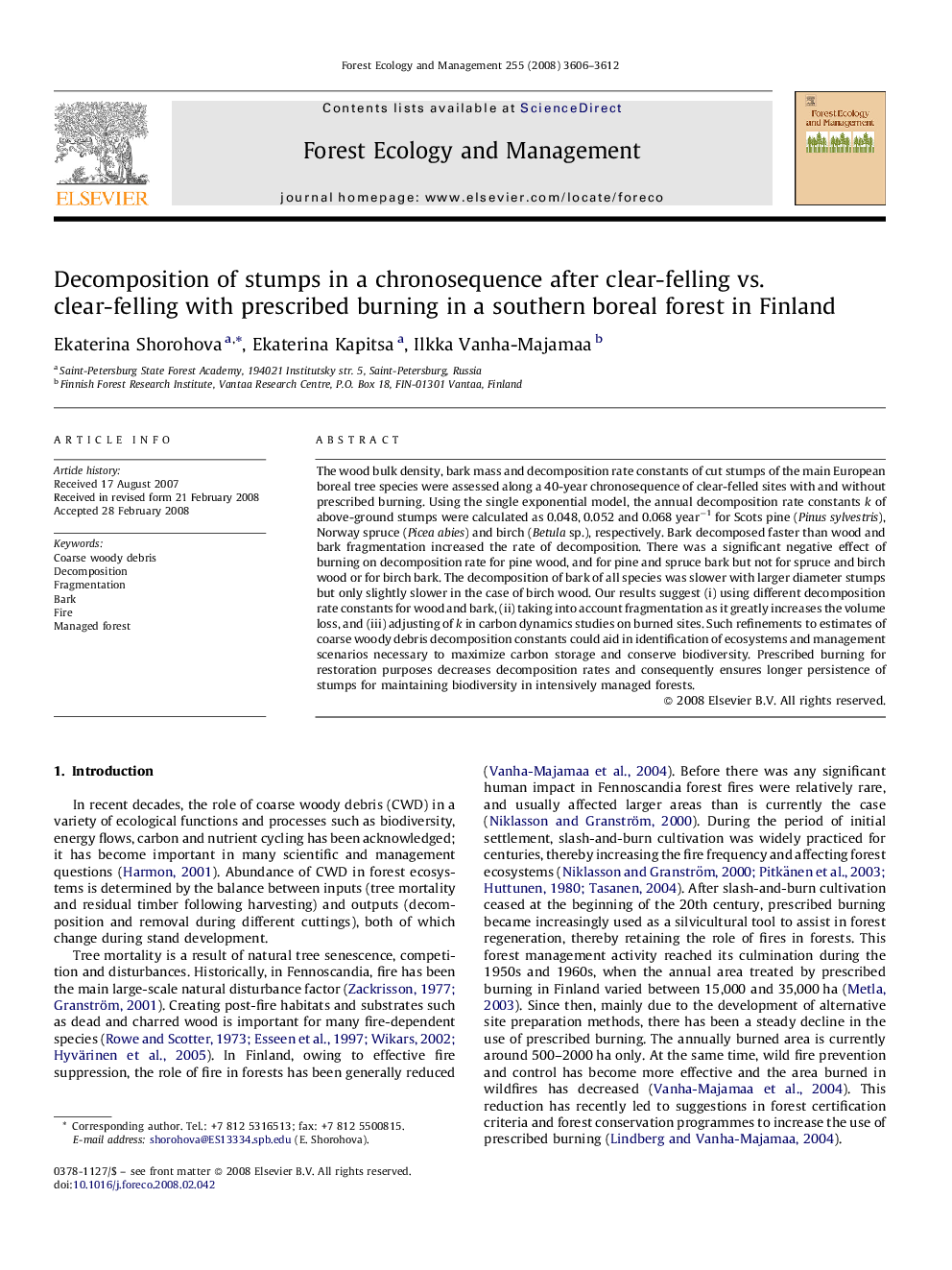| Article ID | Journal | Published Year | Pages | File Type |
|---|---|---|---|---|
| 89033 | Forest Ecology and Management | 2008 | 7 Pages |
The wood bulk density, bark mass and decomposition rate constants of cut stumps of the main European boreal tree species were assessed along a 40-year chronosequence of clear-felled sites with and without prescribed burning. Using the single exponential model, the annual decomposition rate constants k of above-ground stumps were calculated as 0.048, 0.052 and 0.068 year−1 for Scots pine (Pinus sylvestris), Norway spruce (Picea abies) and birch (Betula sp.), respectively. Bark decomposed faster than wood and bark fragmentation increased the rate of decomposition. There was a significant negative effect of burning on decomposition rate for pine wood, and for pine and spruce bark but not for spruce and birch wood or for birch bark. The decomposition of bark of all species was slower with larger diameter stumps but only slightly slower in the case of birch wood. Our results suggest (i) using different decomposition rate constants for wood and bark, (ii) taking into account fragmentation as it greatly increases the volume loss, and (iii) adjusting of k in carbon dynamics studies on burned sites. Such refinements to estimates of coarse woody debris decomposition constants could aid in identification of ecosystems and management scenarios necessary to maximize carbon storage and conserve biodiversity. Prescribed burning for restoration purposes decreases decomposition rates and consequently ensures longer persistence of stumps for maintaining biodiversity in intensively managed forests.
